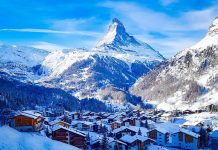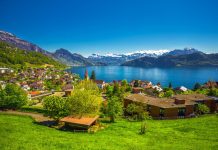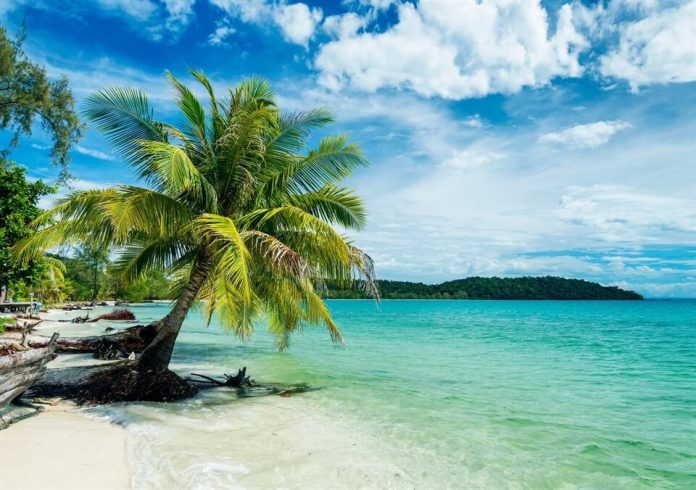The Ultimate Guide to Vienna’s Coffee Renaissance: Where Tradition Meets the Third Wave
For centuries, Vienna’s coffee culture was defined by its grand, historic Kaffeehäuser – institutions of marble tables, Thonet chairs, Melange sipping, and lingering for hours. But beneath this revered tradition, a vibrant coffee renaissance has been brewing since the early 2010s, injecting specialty coffee, modern aesthetics, and global influences into the city’s DNA. This isn’t a rejection of tradition, but a dynamic evolution. Here’s your guide to understanding and experiencing it:
What Defines the Renaissance?
- Third-Wave Ethos: Focus on bean origin, traceability, sustainable sourcing, lighter roasting profiles, and precise brewing methods (pour-over, AeroPress, batch brew alongside espresso).
- Elevated Quality: Moving beyond the standard “Kaffee” to highlight unique flavor profiles from specific farms and regions.
- Modern Aesthetics: Clean lines, minimalist design, natural materials (wood, concrete, marble), and a focus on the coffee bar as the centerpiece.
- Innovation & Experimentation: Exploring new processing methods, unique single origins, signature drinks, and food pairings beyond Sachertorte.
- Global Inspiration: Incorporating trends like flat whites, specialty filter coffee, and alternative milk options seamlessly into the Viennese context.
- Passionate Roasters: The rise of local micro-roasteries dedicated to sourcing and roasting exceptional beans.
Key Players & Pioneers:
- Jonas Reindl (JR): Arguably the pioneer. Founded in 2012, JR brought serious specialty coffee, Nordic roasting lightness, and a sleek aesthetic to Vienna. Multiple locations, strong roasting program.
- Kaffeemodul: Deeply respected for its meticulous approach, knowledgeable baristas, and focus on exceptional filter coffee alongside espresso. A haven for connoisseurs.
- Balthasar: Combines outstanding specialty coffee (roasted by JB Kaffee in Salzburg) with high-quality bagels in a stylish, relaxed setting. Hugely popular.
- GOTA Coffee: Known for its beautiful, minimalist design, focus on clean flavors through light roasting, and curated selection of beans. More than just coffee – an experience.
- Café EL.AN: A small, passionate spot focused purely on quality. Known for its rotating selection of beans from top European roasters and expert brewing.
- CaffèCouture: Another early adopter, offering meticulously crafted coffee from their own roastery in a bright, modern space. Strong focus on the craft.
- Kaffeefabrik: A dedicated micro-roastery with a small, focused café. Passionate about sourcing and roasting, offering beans and brews with distinct character.
- Süssmund Kaffee: Combines specialty coffee with exceptional pastries and brunch in a trendy, welcoming atmosphere. Popular Neubau spot.
Beyond the Roasters: Essential Renaissance Cafés
- Fenster Cafe: Famous for its whimsical “window” service and excellent coffee (often from JB Kaffee), perfect for a quick, high-quality grab-and-go.
- Wolfgang Coffee: Stylish space offering top-notch coffee (often featuring local roasters like GOTA) alongside delicious cakes and light bites.
- Brickmakers Coffee Kitchen & Bar: Industrial-chic space known for great coffee, creative brunch, and transforming into a wine bar later. Roasts some beans in-house.
- Pure Living Bakery: While primarily a bakery, their commitment to organic ingredients extends to excellent specialty coffee, making it a perfect breakfast/brunch spot.
How the Renaissance Coexists with Tradition:
- Mutual Respect: Many new-wave baristas deeply respect the traditions of the Kaffeehäuser. Some older establishments have subtly incorporated better beans or filter options.
- Different Experiences: They serve different purposes. Want a newspaper, cake, and hours of contemplation? Go to a Kaffeehaus. Want a meticulously brewed Geisha or a flat white with oat milk? Head to a renaissance spot.
- Expanding Palates: The renaissance has introduced Viennese and visitors to a wider world of coffee flavors and brewing styles.
- Shared Space: It’s common to see someone working on a laptop in a modern café and someone reading a novel in a traditional Kaffeehaus – both are valid Viennese coffee experiences now.
Experiencing the Renaissance: Tips
- Ask Questions: Baristas in these spots are usually passionate and knowledgeable. Ask about the beans, origin, or recommended brew method.
- Try Filter Coffee: Don’t just default to espresso. Explore pour-over or batch brew to taste the nuanced flavors specialty coffee offers.
- Look for Roasteries: Cafés attached to roasteries (like Kaffeefabrik, GOTA, CaffèCouture) offer the freshest experience.
- Explore Neighborhoods: The scene is strong in districts like Neubau (7th), Mariahilf (6th), and Leopoldstadt (2nd), but gems are citywide.
- Embrace the Vibe: Enjoy the modern design, the focus on the coffee-making process, and the often more contemporary clientele.
- Respect the Craft: These places focus on quality. It might take a few minutes longer than a traditional Melange, but it’s part of the experience.
The Future:
Vienna’s coffee renaissance is mature but still evolving. Expect continued innovation in sourcing, fermentation processing, signature drinks, and sustainability. The dialogue between centuries-old tradition and cutting-edge specialty coffee defines one of the world’s most exciting and layered coffee scenes today.
In short: Vienna’s coffee renaissance is a thrilling chapter where the reverence for the Kaffeehaus meets the precision and passion of the global specialty coffee movement. It enriches the city’s offering, ensuring Vienna remains a true coffee capital for the 21st century. Explore both worlds – they are equally Viennese!
















I truly enjoy looking at on this web site, it contains superb content. “The great secret of power is never to will to do more than you can accomplish.” by Henrik Ibsen.